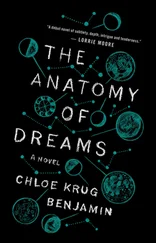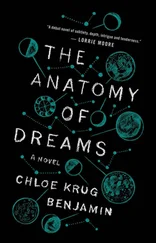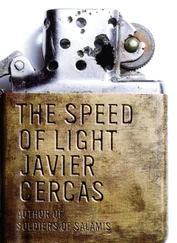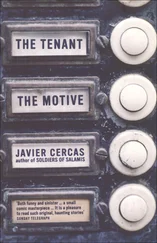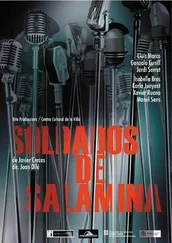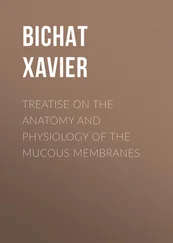In July 1976, when the King hands Suárez the leadership of the government, Europe awaits the pacific change from dictatorship to democracy with sympathy tempered by scepticism; the United States, with sympathy tempered by apprehension: at the time its ideal for Spain — from the strategic point of view a key country in case of war with the Soviet Union — is a docile parliamentary monarchy and limited democracy that prevents the existence of a legal Communist Party and brings the country into NATO. At the outset the appointment of Suárez, described as a young lion of Francoism, pleases the United States much more than Europe, but soon the preferences are reversed: Suárez legalizes the Communist Party, propels the country towards a full democracy and, in spite of the constant pressures brought to bear on him — including the pressure of his fellow UCD members — indefinitely postpones the application to join the Atlantic Alliance; not only that: convinced that by remaining on one side of the division into blocs imposed by the cold war Spain can play a more efficient or more visible international role than by enrolling as a supernumerary in the bloc under the American thumb, during his last year in government Suárez receives the Palestinian leader Yasser Arafat at Moncloa and sends an official observer to the Non-aligned Movement Summit. Four years earlier, these gestures of independence — which in Spain irritate the right and almost all the leaders within the Prime Minister’s party but not an overwhelmingly anti-American public opinion — would have caused a faint worry mixed with astonishment in Washington; combined with the country’s instability, in the autumn of 1980 they cause manifest alarm. Because in those four years things have changed radically, and not just for the United States: in October 1978 Karol Wojtyla was elected Pope of the Catholic Church; in May 1979 Margaret Thatcher was elected Prime Minister of the United Kingdom; in November 1980 Ronald Reagan was elected President of the United States. A conservative revolution spreads across the West and, with the aim of finishing off the Soviet Union by way of a ring of concentric pressure, Reagan relaunches the arms race and heats up the cold war. Given those circumstances, if there’s one thing Washington doesn’t want it’s upheavals in southern Europe: in September it successfully supported a military coup in Turkey, and now harbours fears that the fragility of a left-leaning Suárez hounded by political and economic crises and by an increasingly strong Socialist Party, will end up creating favourable conditions for a revolution similar to the one in Portugal in 1974. So when in the months before 23 February the US Embassy and CIA station in Madrid begin to receive news of the imminence of a surgical coup or a touch on the rudder of Spanish democracy, their reaction, more than favourable, is enthusiastic, in particular that of Ambassador Terence Todman, an extremely right-wing diplomat who in previous years fully supported Latin American dictatorships as Assistant Secretary of State for Inter-American Affairs, who now manages to ensure that the only two Spanish politicians welcomed by President Reagan in the White House before the coup should be two significant Francoist politicians biding their time — Gonzalo Fernández de la Mora and Federico Silva Muñoz — and on 13 February meets with General Armada on an estate near Logroño. We do not know what was said at this meeting, but there are facts that demonstrate beyond doubt that the US government was informed of the coup before it took place: from 20 February the US military bases of Torrejón, Rota, Morón and Zaragoza were in a state of alert and ships from the VI Fleet were stationed in the vicinity of the Mediterranean coastline, and all through the evening and night of the 23rd an AWACS electronic intelligence plane belonging to the 86th Communications Squadron deployed from the German base of Ramstein overflew the peninsula with the object of monitoring Spanish airwaves. These details were not known until days or weeks or months later, but on the night of 23 February, when the US Secretary of State, General Alexander Haig, sent a question about what was going on in Spain without a single word of condemnation of the assault on the Cortes or a word in favour of democracy — the attempted coup d’état did not go beyond ‘an internal matter’ as far as he was concerned — no one failed to understand the only thing there was to understand: that the United States approved of the coup and that, if it ended up succeeding, the US government would be the first to celebrate.
So in the final days of 1980 and the first of 1981 reality itself seems to plot against Adolfo Suárez (or Adolfo Suárez feels that reality itself is plotting against him): journalists, businessmen, bankers, right-wing, left-wing and centrist politicians, Rome and Washington. Even some Communist leaders make public or private statements in favour of a government of national unity led by a military officer. Even the leaders of the main trade unions are doing so, talking about extreme situations, emergency situations, not of a crisis of government but of state. Even the King does so, trying in his way to be rid of Suárez and spurring on some of those against him.
All these materials went into the making of the coup: the political manoeuvring against Adolfo Suárez was the organic matter of the coup; all these materials went into the making of the placenta of the coup. That said, maybe the word conspiracy might seem inadequate to define the campaign of political harassment against Adolfo Suárez; in other words: in the months before the coup Suárez undoubtedly felt that all of reality was plotting against him, but was this not a simple feeling of a politically finished and personally broken man unsubstantiated by facts? Was not what was really happening in Spain during this time a simple confluence of political strategies, interests and legitimate ambitions directed at removing an inept prime minister from power? It was, but that is exactly what political plotting is: the alliance of a collection of people against whoever holds power. And that is exactly what occurred in Spain in the final days of 1980 and the first of 1981. I repeat that the content of this conspiracy was legitimate, but its form was not, and at least in Spanish politics of the time, after forty years of dictatorship and less than four of democracy, the form was the content: stretching the very fragile forms of democracy to their limit, raising a dense political dust cloud while turning to military officers permanently tempted to destroy the political system as a means of ending Suárez’s premiership, meant handing over to the enemies of democracy the instrument with which to finish off Suárez and the democracy. Only a few refused to participate in that suicidal gibberish; among them were General Gutiérrez Mellado and Santiago Carrillo, two of the very few front-line politicians who did not join the siege of the Prime Minister and thus avoided the error common to a ruling class whose conspiratorial passion against Adolfo Suárez led it consciously or unconsciously to plot against democracy. As for Suárez himself, he was of course a pure politician, and as such, in spite of the fact that he was politically finished and personally broken, he continued in those months fighting to stay in power; he was fighting for himself, but in fighting for himself and fighting to stay in power he was also fighting to sustain the edifice he’d constructed over the years he had been in office: although from the beginning the coup-inclined military considered Suárez the embodiment of the democracy — and for that reason when they finally launched the coup for them it was a coup against Suárez more than a coup against democracy — maybe Suárez never really embodied democracy until the days before the coup, and maybe he never fully embodied it until the evening of 23 February, while the bullets whizzed around him as he sat on his Prime Minister’s bench in the Cortes, because never as much as in that moment did fighting for himself and to stay in power correspond with such precision to fighting for democracy.
Читать дальше

